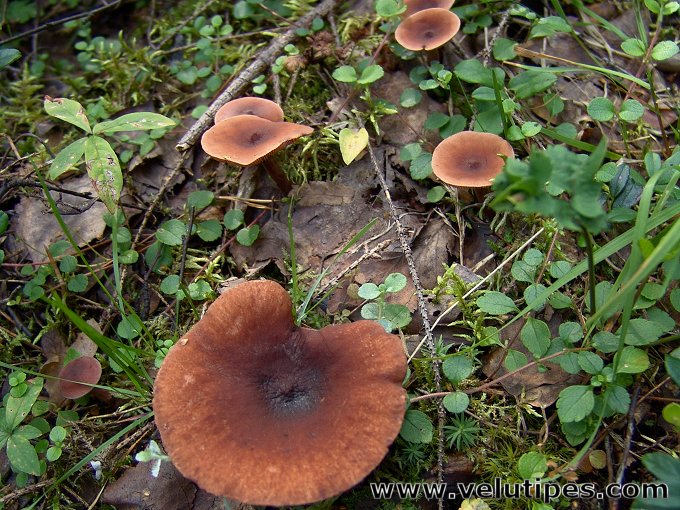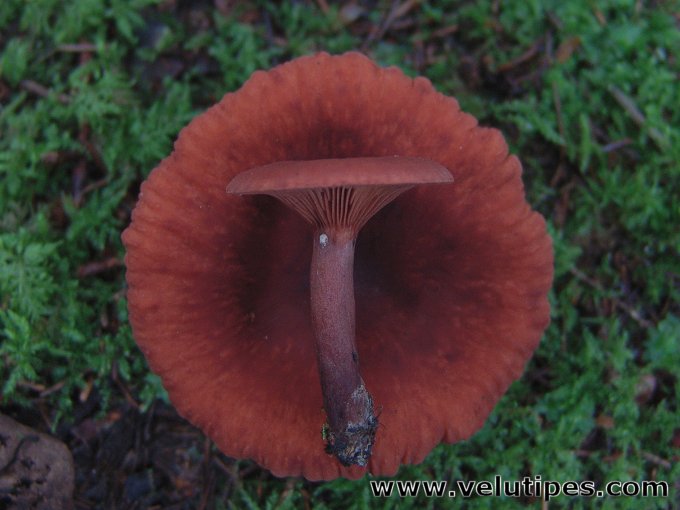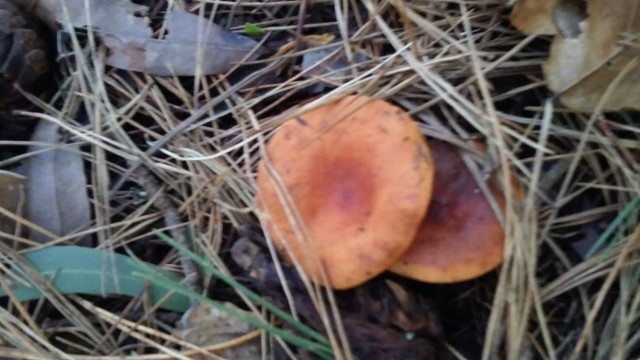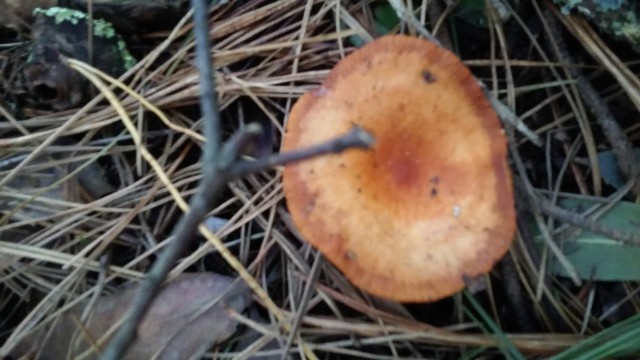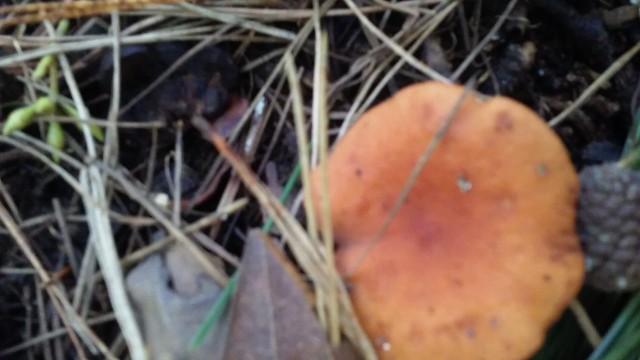How to identify Candy Caps :
-
Cap Color: a uniform cinnamony copper color
that is sometimes darker in the center,
The color is not zoned concentrically.
That is, there are not lighter and darker concentric bands or rings.
-
Cap Surface rough: The cap will not feel smooth.
If you rub your finger lightly over the cap surface,
it will have a rough texture, that is, it will feel nubby.
-
Cap surface dry: The cap surface is dry, never viscid
-
Smell: Candy Caps have a maple syrup fragrance or scent.
The scent has been described as similar to
maple syrup, butterscotch,
burnt sugar, camphor, or
vaguely spicy.
The maple syrup scent
may or may not be easily detectable
in a fresh specimen.
Fresh candy caps often don't
demonstrate a maple fragrance until dried.
Furthermore some people can easily detect the
maple syrup scent while
others can not.
The scent
can be revealed by burning a little bit of
the mushroom using a butane cigarette lighter.
Burning a little bit of the mushroom will
release the fragrance it then can be readily detected.
Finally it should be noted that the fragrance detected depends
upon the person,
the species, the variety, the tree symbiont, the soil,
the duff type, the growing region,
and other variables.
-
Stipe: a snappy, crispy, and hollow stipe,
rather
than a cartilaginous or rubbery stipe.
The stipe will break like chalk (similar to a Russula)
The brittleness is caused by rounded cells called sphaerocysts.
-
Latex: Produces a pale white milky latex
that has a skim-milk consistency.
The latex is quite watery and whitish,
and it does not turn color upon exposure to the air.
Stated differently, the sap has a milky translucent quality
that looks like watered down whole milk or skim
milk,
rather than opaque white or yellow whole milk.
The latex of many other Lactarius species turns color upon exposure to air.
-
Cap Margin: Often wavy or frilled
-
Cap Size: a size ranges from one to three (or more) inches in
diameter.
The body is thin rather than chunky.
-
Spore Print: a white spore print.
It can sometime be seen where some caps overlap others.
-
Gills: multitudes of thin lighter gills,
rather than a few
widely spaced gills.
-
Taste: a sweet, non acrid taste.
Does not have a acrid
or bitter component.
How to identify Candy Caps :
that is sometimes darker in the center,
The color is not zoned concentrically.
That is, there are not lighter and darker concentric bands or rings.
If you rub your finger lightly over the cap surface,
it will have a rough texture, that is, it will feel nubby.
The scent has been described as similar to
maple syrup, butterscotch, burnt sugar, camphor, or vaguely spicy.
The maple syrup scent may or may not be easily detectable
in a fresh specimen. Fresh candy caps often don't
demonstrate a maple fragrance until dried.
Furthermore some people can easily detect the
maple syrup scent while others can not.
The scent can be revealed by burning a little bit of
the mushroom using a butane cigarette lighter.
Burning a little bit of the mushroom will
release the fragrance it then can be readily detected.
Finally it should be noted that the fragrance detected depends
upon the person, the species, the variety, the tree symbiont, the soil,
the duff type, the growing region, and other variables.
rather than a cartilaginous or rubbery stipe.
The stipe will break like chalk (similar to a Russula)
The brittleness is caused by rounded cells called sphaerocysts.
that has a skim-milk consistency.
The latex is quite watery and whitish,
and it does not turn color upon exposure to the air.
Stated differently, the sap has a milky translucent quality
that looks like watered down whole milk or skim milk,
rather than opaque white or yellow whole milk.
The latex of many other Lactarius species turns color upon exposure to air.
The body is thin rather than chunky.
It can sometime be seen where some caps overlap others.
rather than a few widely spaced gills.
Does not have a acrid or bitter component.
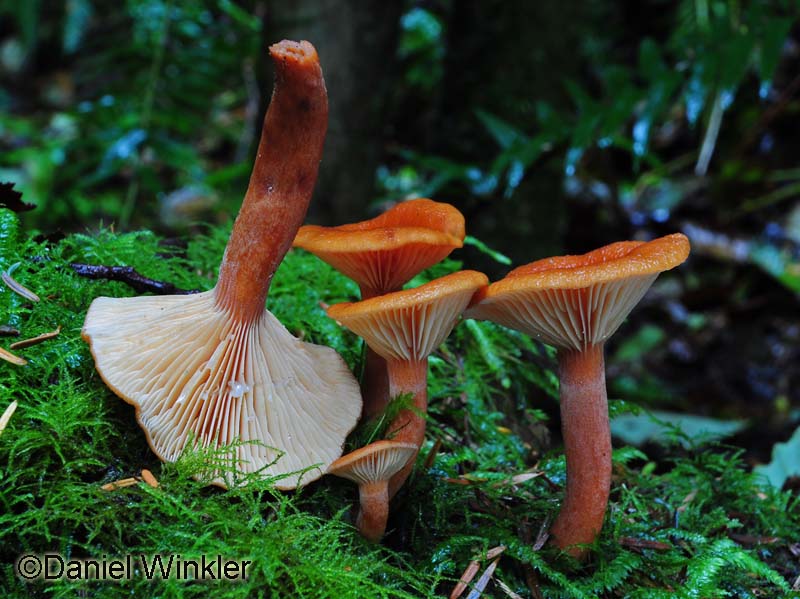
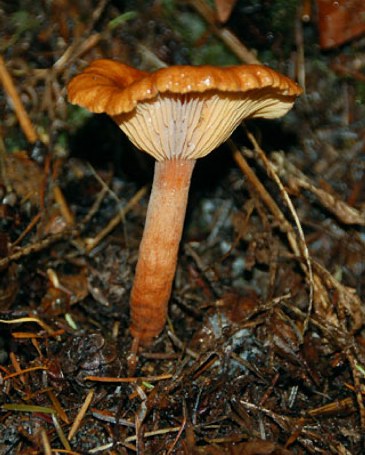
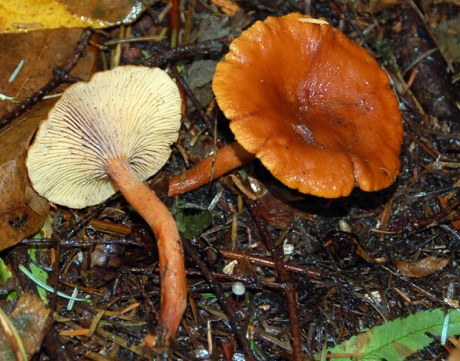
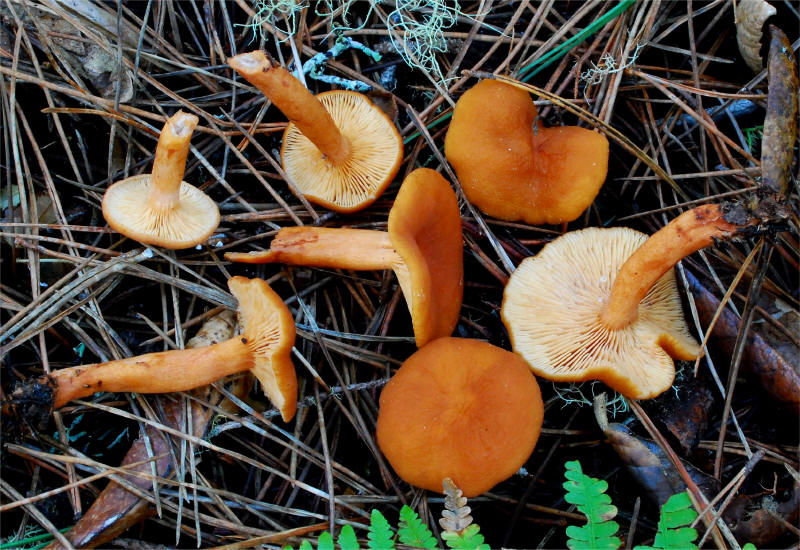
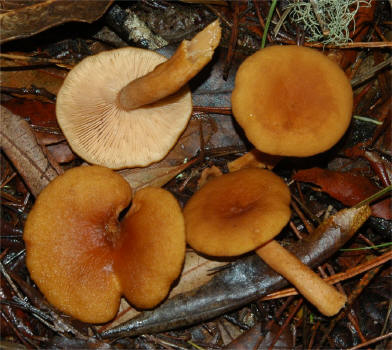
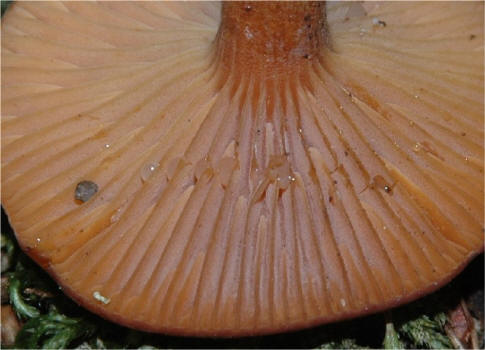
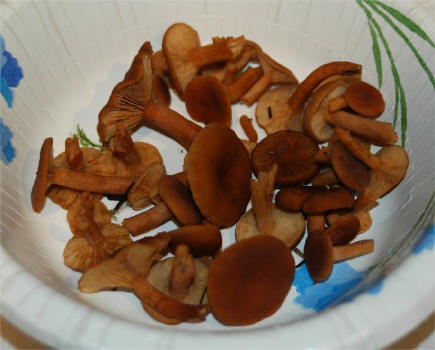
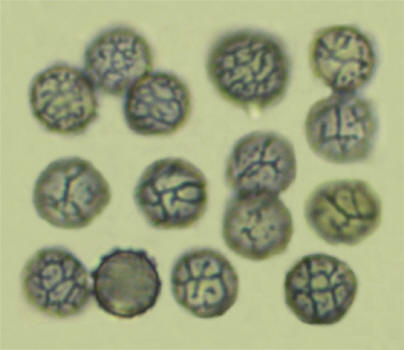
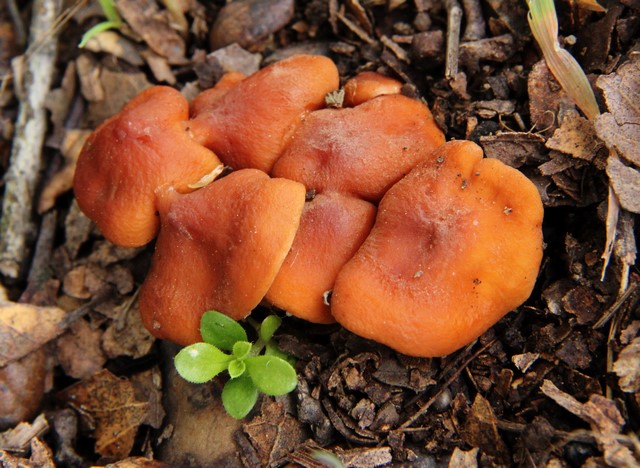
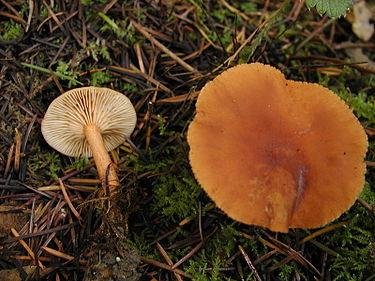
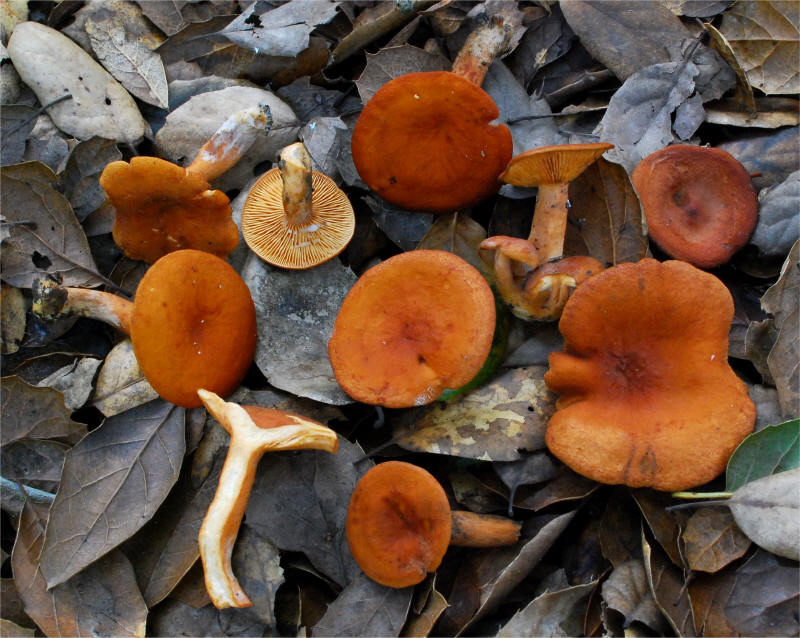
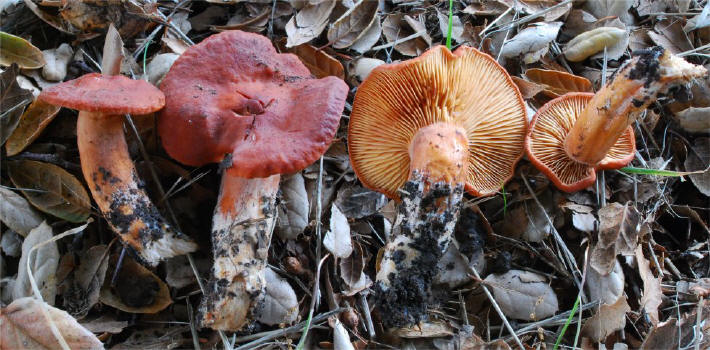

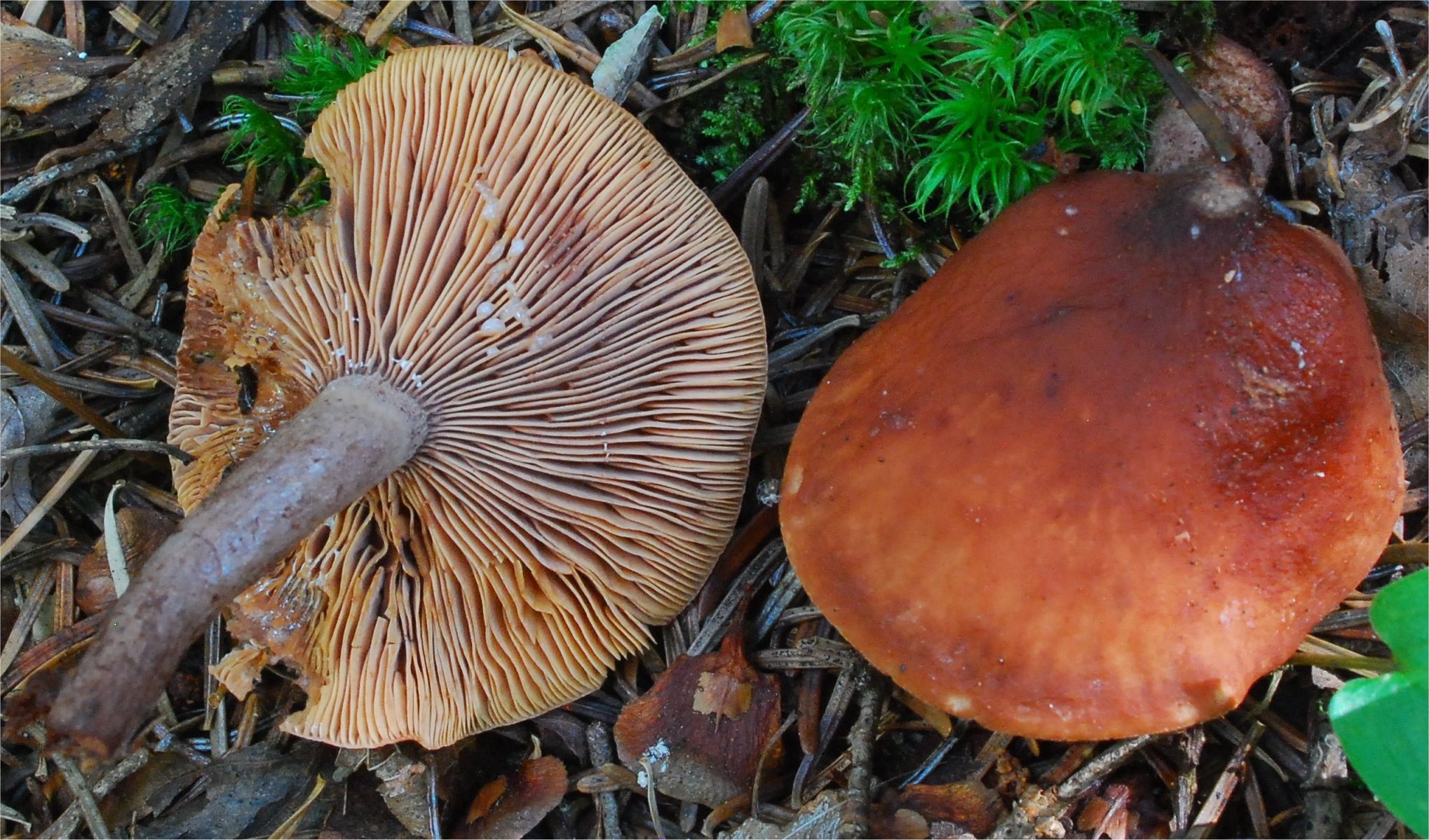
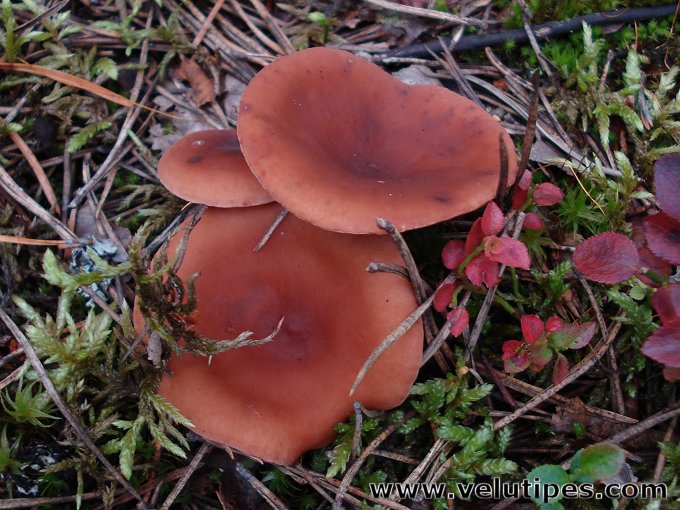

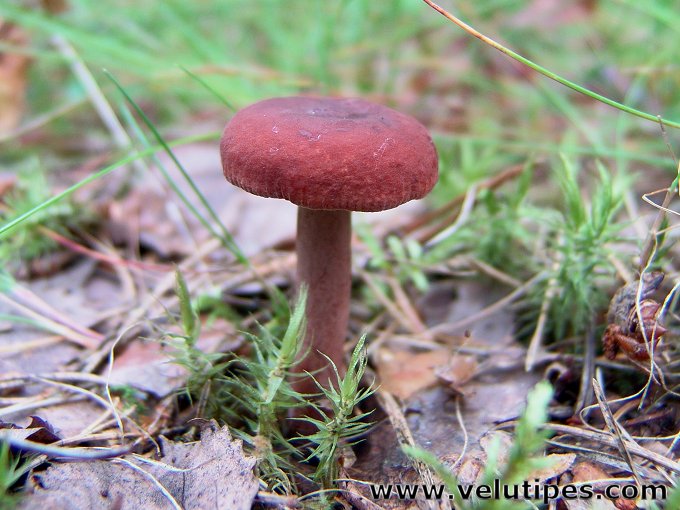
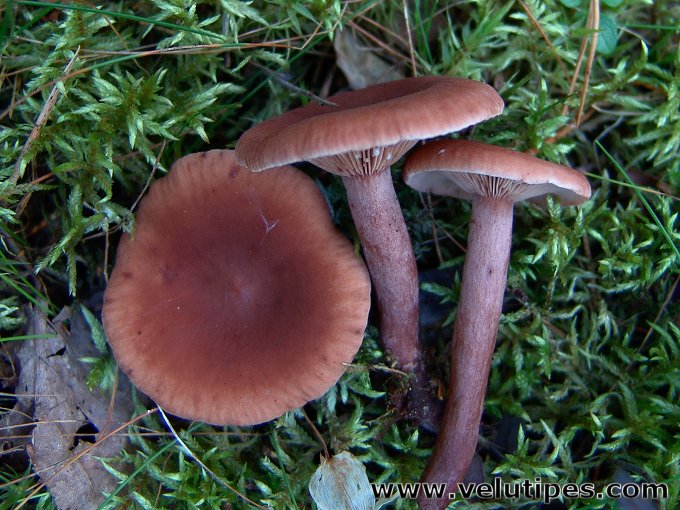
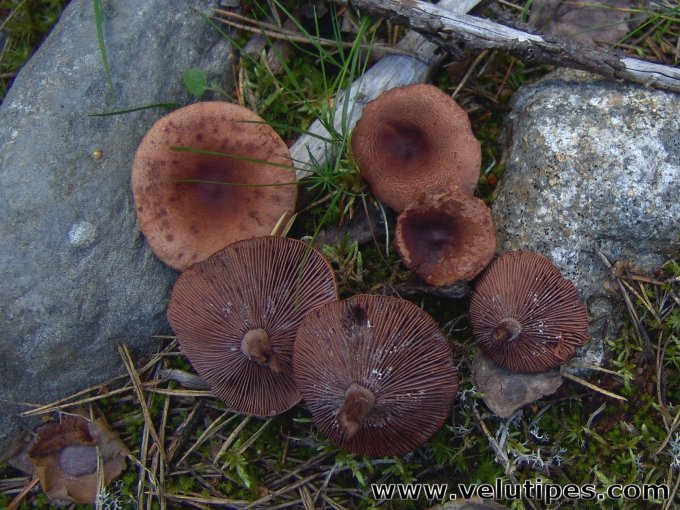
.jpg)
